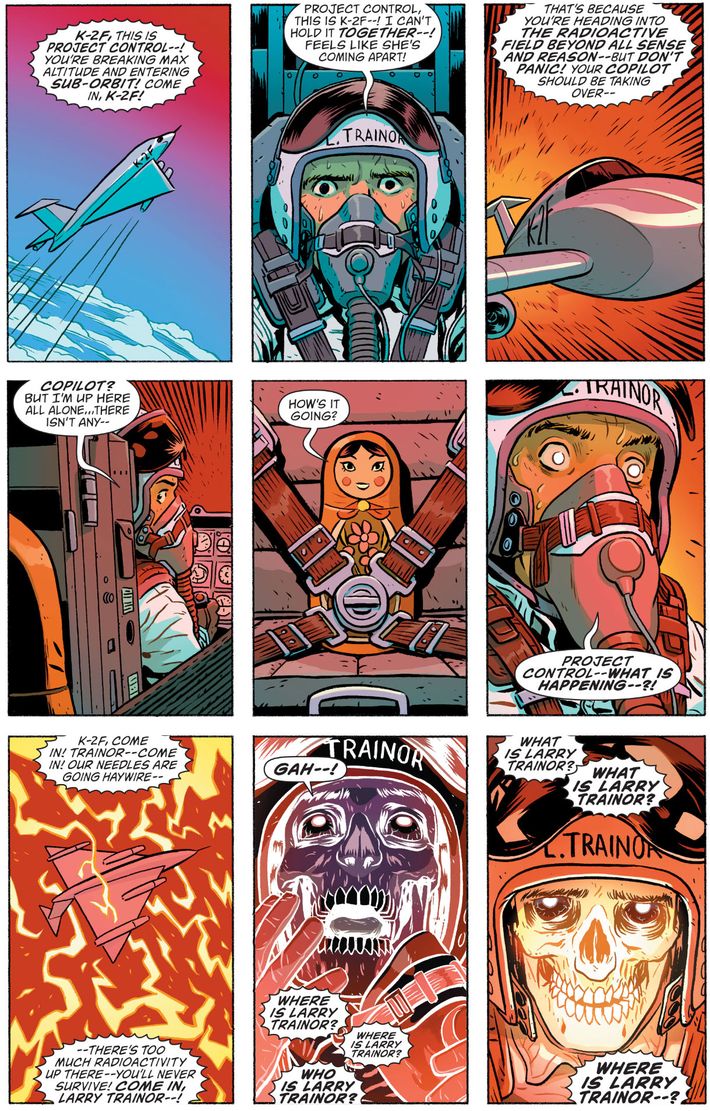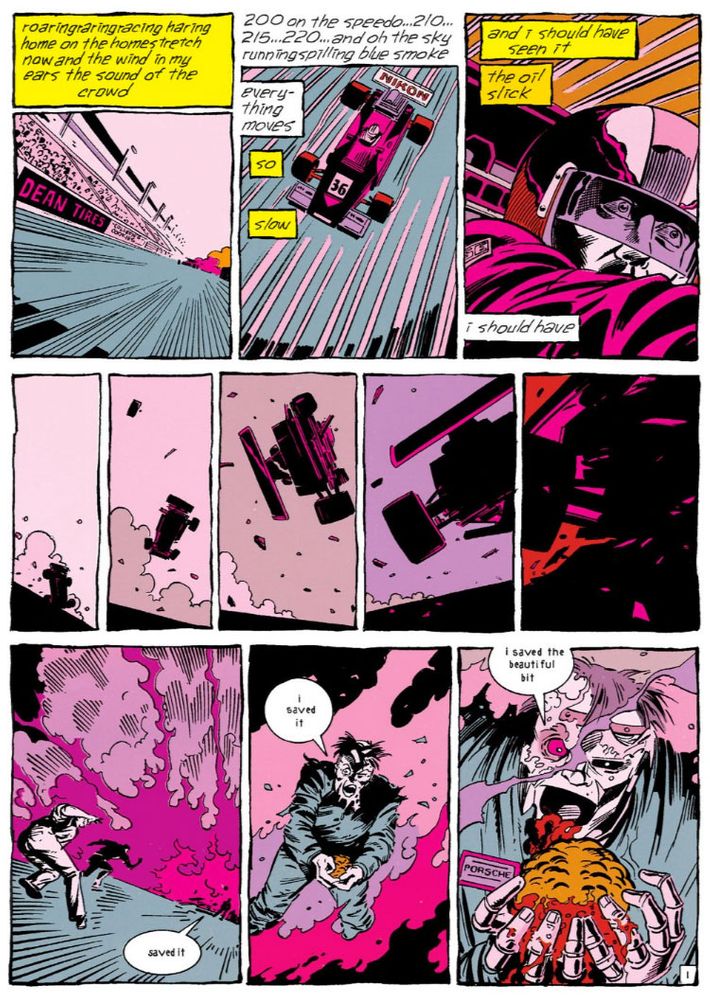
As 1988 turned to 1989, a strange little comic book appeared on shelves across the country, written by a Scotsman with virtually no experience in American comics. His name was Grant Morrison; the comic was Doom Patrol No. 19. The series had been a nonstarter for months, failing to find a foothold in sales charts and struggling with reader disinterest. DC Comics brought Morrison onboard with the 19th issue as an attempt to toss something at the wall and see if it would stick. He was on the verge of his 29th birthday and he was full of ideas — weird ones.
As it turned out, Morrison transformed Doom Patrol into one of the most boundary-pushing and influential mainstream series of its era. It followed a group of troubled, misfit metahumans — a woman with the face of an ape who can bring her imaginary friends to life; a woman with nearly 50 alternate personalities, all of whom had different superpowers; a robot with a human brain; a sentient roadway; and more — as they fought mind-bending threats that would’ve been at home in the most outré Umberto Eco or Robert Anton Wilson novel. As Morrison put it, they were less a superhero team than a support group.
After Morrison went on to ever-higher-profile projects, the series lost much of its momentum. There were attempts to revive it over the years, none of which captured the imagination quite like that seminal reboot. But there’s a chance we’re witnessing a new dawn for the Doom Patrol. My Chemical Romance front man and occasional comics scribe Gerard Way has relaunched the book alongside penciler Nick Derington and colorist Tamra Bonvillain. They kick off this week’s Doom Patrol No. 2 with a particularly remarkable page.
It revolves around a longtime Doom Patrol character, Larry Trainor, a.k.a. Negative Man. A former test pilot, exposure to radioactivity granted him the ability to transform into something called a “soul-self,” which can fly, cause explosions, become intangible, and exercise a kind of astral projection. The soul-self is a semi-independent entity that has occasionally rebelled against him, making his powers as much a burden as a gift.

When we meet Larry on this page, he’s in a tough spot. The scene appears to be a flashback to the day he first transmogrified while flying an experimental jet. Despite the insanity depicted, the layout is formalistic and rigid: three rows of three rectangular panels, each. It’s a wise move — although it might be tempting to show psychedelic chaos in a series of loopy, free-form images, Way and Derington’s approach traps us. The reader, like Larry, is experiencing this transformation not as a liberation but as a claustrophobic nightmare in a confined space.
Like so much good comics art, you could remove all the dialogue from the page and it would still work. Three of the panels show us a plane in increasing stages of distress. First, it’s merely above the clouds, but Bonvillain’s shading in that panel presents a gradual change from the expected blue of the stratosphere to an unnatural red farther out. The next time we encounter the vehicle, two panels later, the Earth is nowhere to be seen — instead, Derington puts in speed lines suggesting a dizzying velocity that’s only increasing. By the time we get to the third-to-last panel, all sense of usual reality is gone, with the plane trapped in a crackle of orange and yellow. It’s unclear whether it’s facing up, down, sideways, or some other direction entirely.
The facial acting from Derington doubles down on the page’s air of panicked uncertainty. Two thirds of Larry’s face and head are obscured by his respirator and helmet, meaning the penciler has to put all of his energy into his protagonist’s eyes and eyebrows. At first, Larry still has traces of determination, though they’re giving way to fear. Then, he looks backward to see something odd in the backseat. It is, bizarrely enough, a Russian nesting doll, buckled into a safety belt and speaking to him. His eyes widen; his brows climb upward in shock.
Before he can figure out what the hell’s happening, his attention is quickly drawn away by a bigger disaster ahead. We’re moved past fear to near-insane terror, Larry’s eyes opening to their full limit and his pupils turning inhumanly white. In the final two panels, Larry’s respirator falls away and his face turns into a skull — but not an ordinary skull, as this one has eyebrows and photo-negative eyeballs. At first, he screams; after that, his head tilts down and his eyebrows fall, suggesting either unconsciousness or tragic resignation. A lesser artist would have made the skull standard-issue, but the inclusion of a few human features accentuates the inexplicable nature of the situation.
As we Jews say on Passover, dayenu — all that would have been enough. But we get more: Way’s expertly unsettling dialogue. Larry speaks to ground control in a conversation that quickly jumps the rails. The folks at home tell him he’s “heading into the radioactive field beyond all sense and reason,” but that he shouldn’t panic, as his co-pilot is taking over. His co-pilot being, of course, the nesting doll, which calmly asks him, “How’s it going?”
The page closes with a voice — still ground control? Perhaps the narrator? Or is it supposed to be us, the readers? — screaming questions. “Where is Larry Trainor?” comes first — a reasonable enough question. Then, “Who is Larry Trainor?” and “What is Larry Trainor? What is Larry Trainor?” He has no idea, nor do we.
These nine little boxes echo the memorable first page of that 1989 issue that kicked off Morrison’s narrative, illustrated by Richard Case, Carlos Garzon, and Michele Workman. (It’s below.) In that one, Doom Patroller Robotman dreams a nightmare version of his own origin story in which his speeding race car crashes in flames, burning away the skin of his face and revealing a metallic skull beneath it. Deliberate or not (and I suspect it’s the former, given Way’s reverence for the Morrison run), that connection presents a psychedelic link to the past, one that reminds us how thrilling it is to see the Patrol put on another crazy ride to the edges of comprehension.





